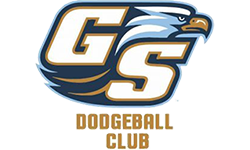Below are the results of the preferential election for the 2025/2026 NCDA Rulebook, select Policies, and 2026 Executive Board. The updated Rulebook and Constitution are scheduled to be released prior to the start of the 2026 Season.
Nationals 2026
Final results for Nationals 2026 selection:
The Ohio State University – 1st Round
The Ohio State University has been selected to host Nationals 2026.
Jackson Bolognia has been selected to represent OSU as the NCDA’s 2026 Director of Nationals.

Executive Board
Open Directors
Ethan Lehmkuhl
Kevin Bailey
Kris Haas
Ryan Ginsberg
Rule Proposals
R.1) Head Coach Designation
Yes: Only 1 designated head coach may talk to refs.
12-6
R.2) Penalty for Spiking Ball
Yes: Remove “spiking the ball” as a cardable offense from the rulebook.
14-4
R.3) Clock Counting Mechanics (Must count down)
Yes: Require all teams to count down the shot clock to 0 during play.
14-4
R.4) Timeout During Last 15s Clock
Yes: Timeout by opposing team resets shot clock to 15 during “last 15” count.
15-3
Policy Proposals
P.1) Nationals Bid Requirements
Yes: Teams must submit detailed proposals at the captains meeting.
10-8
P.2) Addition of Female 10th Board Member Position
Yes: Add a 10th board position which must be held by a female representative.
12-6
Executive Board Overrule 9-0
No: The existing board remains responsible for supporting and managing the Women’s Division. [Current]
*Editor’s Note: While supporting the Women’s Division remains a top priority, the Eboard believes expanding the size of the Board is not the appropriate solution. The current structure already enables shared responsibility among elected Board members, and this system has effectively supported the division’s growth without requiring a permanent, identity-based position. Additionally, creating a board seat limited to individuals of a specific gender identity violates the organization’s non-discrimination policy, and risks violating additional federal discrimination policies for non-profits. The Board will continue to prioritize and oversee the Women’s Division regardless of its composition, ensuring sustained support without structural expansion.
P.3) Regular Season Tournament Director Designation
No: Do not require a Board member or representative to attend all tournaments; event oversight remains the host school’s responsibility. [Current]
10-8
P.4) NCDA Division Names
No: Keep divisions as “Open” and “Women’s”. [Current]
10-7-1
P.5) Monthly League Updates
Yes: Require the Executive Board to send monthly league updates.
14-4
P.6) Captains Meeting Notes
Yes: Require the Executive Board to share minutes and supporting materials from the Nationals Captains’ Meeting within 10 days of the event.
15-3
P.7) Diversity, Equity, Inclusion
Yes: Expand the NCDA’s commitment to diversity, equity, and inclusion to apply to all athletes, coaches, staff, and fans.
13-5
P.8) Application of Forfeits
Yes: Forfeits at multi-day events will be applied per day; teams must be able to play all their scheduled games each day.
13-5
P.9) Multi-Round National Bid Process
Yes: Implement a multi-round Nationals host voting process.
11-7
Ranking System Proposals
There were no proposals for Ranking System changes for the 2026 season.
Proposal History
A history of all of the NCDA’s rule, policy, and ranking system proposals can be found here [Link]



























